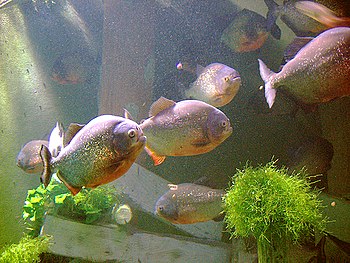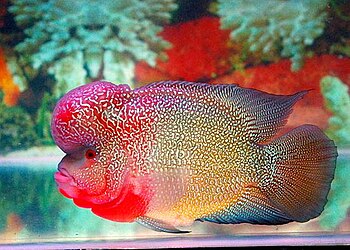 |
| Aquarium of Lyon in France - Piranhas (Photo credit: Wikipedia) |
Although it isn't extremely complicated, maintaining an aquarium does require a little bit of effort on your part. Just feeding your pet fish and watching them swim isn't going to be enough. It is important to monitor the state of the aquarium and the state of your piranhas on a daily/weekly basis. Below is a list of steps that will help you properly maintain your pet piranha's home:
1. Check the water chemistry on a weekly basis. At a minimum, make sure the following levels are maintained:
Temperature Range - 73°F - 81°F
pH Range - 5.5 - 7.0
Hardness - 15° - 20°
2. Keep an eye on algae.
Algae is the green mossy substance you sometimes see on the aquarium walls and decorations. One way to prevent algae is by introducing a few algae eaters to your tank. For example, plecos or snails. An alternative is to scrape the algae once it develops, using a simple algae scraper. (In fact, scraping the walls of your aquarium before the algae appears is also a good step.)
3. Clean your filter components.
From time to time you will have to clean the filter and its components. However, it is important to note that not all components should be cleaned at the same time. Over time, bacteria builds up on the filter components and some bacteria is essential for your piranha's health. Most aquarists will recommend cleaning one component per week.
4. General clean-up and water changes.
Replace approximately 20% of the water every week or so. You can do this by using an aquarium vacuum, which allows you to suck debris lying around on the gravel and ornaments while removing some of the water at the same time. Once approximately 20% of the water has been removed, replace it with fresh tap water. Things to note:
a. Use a bucket specifically dedicated for your aquarium (i.e.: do not use any household bucket that you may have used for cleaning the house. Leftover chemicals may harm your piranhas.)
b. Make sure the new water is the same temperature that is already in your aquarium to avoid shocking and stressing your piranhas.
c. Add the new water slowly (i.e.: 4-5 cups every 15 minutes or so).
This may seem complicated at first, however, the more you do it, the faster and easier it becomes!
|






